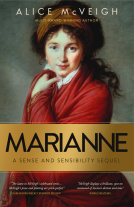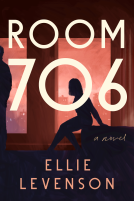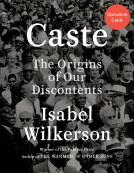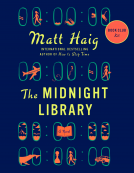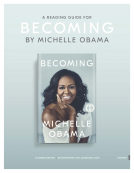
Radicals, Volume 2: Memoir, Essays, and Oratory
Audacious Writings by American Women, 1830-1930
by Meredith Stabel & Zachary Turpin, ed.
This title was previously available on NetGalley and is now archived.
Send NetGalley books directly to your Kindle or Kindle app
1
To read on a Kindle or Kindle app, please add kindle@netgalley.com as an approved email address to receive files in your Amazon account. Click here for step-by-step instructions.
2
Also find your Kindle email address within your Amazon account, and enter it here.
Pub Date Jun 15 2021 | Archive Date Jun 15 2021
University of Iowa Press | University Of Iowa Press
Talking about this book? Use #RadicalsVol2 #NetGalley. More hashtag tips!
Description
Literature / Women's Studies
Emily Dickinson on sex, desire, and “the chapter . . . in the night.” Emma Goldman against the tyranny of marriage. Ida B. Wells against lynching. Anna Julia Cooper on Black American womanhood. Frances Willard on riding a bicycle. Perhaps the first of its kind, Radicals is a two-volume collection of writings by American women of the nineteenth and early twentieth centuries, with special attention paid to the voices of Black, Indigenous, and Asian American women.
In Volume 2: Memoir, Essays, and Oratory, selections span from early works like Sarah Mapps Douglass’s anti-slavery appeal “A Mother’s Love” (1832) and Maria W. Stewart’s “Address Delivered at the African Masonic Hall” (1833), to Zitkala-Sa’s memories in “The Land of Red Apples” (1921) and Charlotte Perkins Gilman’s moving final essay “The Right to Die” (1935). In between, readers will discover a whole host of vibrant and challenging lesser-known texts that are rarely collected today. Some, indeed, have been out of print for more than a century.
Unique among anthologies of American literature, Radicals undoes such silences by collecting the underrepresented, the uncategorizable, the unbowed—powerful writings by American women of genius and audacity who looked toward, and wrote toward, what Charlotte Perkins Gilman called “a lifted world.”
Advance Praise
“This smart collection stands out for its inclusivity—of genres, of voices, and of writings whose very audacity has made them less widely known. Readers will meet new historical figures and also discover new dimensions of feminist authors they thought they already knew. The bold, lucid introduction is a bonus.”—Landon R. Y. Storrs, author, The Second Red Scare and the Unmaking of the New Deal Left
Available Editions
| EDITION | Other Format |
| ISBN | 9781609387686 |
| PRICE | $25.00 (USD) |
| PAGES | 288 |
Average rating from 9 members
Featured Reviews
 Brittany M, Educator
Brittany M, Educator
I will absolutely be adopting this text for the classroom. It’s very likely I will use the set with my seniors next year, as I think it would be a fun way to maneuver into some edgier literature that older kids might really enjoy. I was really particularly fond of the Charlotte Gilman Perkins stuff as I have always been a Stan of “The Yellow Wallpaper,” but not overly familiar with her other work.
The second volume contains some essays that I have never come across, which was thrilling, to say the least. Overall, an empowering and timely anthology.
Meredith Stabel and Zachary Turpin, Radicals, Volume Two Memoir, Essays and Oratory, Audacious Writings by American Women, University of Iowa Press, 2021.
The foreword states that ‘This collection reminds us that it [a period of violence against women, indigenous Americans and African Americans] was also a time of great social and intellectual excitement’. The writers also warn us that there are glaring shortcomings in some of the material, where the authors either ‘go too far’ or are in themselves often racist, sexist and classist, as well as exhibiting the failure to understand or appreciate other valid stances. However, they also suggest that such shortcomings were ‘common features of the “progressive” thought of the era’. It is well to read these caveats before embarking on the papers in this wide-ranging collection, some of the views are indeed shocking, and it is the work of the reader to look for where such material can be useful. I am assuming that the collection is mainly seen as a support for academic endeavour and have had that proviso before me in writing this review. Where can the researcher use the material in this volume?
Firstly, the writings are new, sometimes the authors are hitherto unidentified, where they are familiar, the papers are unknown. This provides the academic and non-academic reader with a wealth of material from which new observations about radical writing, women’s role, racism, sexism, and classism can be made. At the same time, much of the writing needs diligent unpacking before it can be useful. How does the non-academic reader deal with this task? Do they want to? Are the new observations worth the work? And, for the academic, does the material bring new information to further enlighten their writing? How do they unpack the, at times, contrary views expressed by the radicals of this volume? How useful will such conflicting views be in making a case for radical views, mixed as they are with such non-progressive stances?
For example, the indigenous American story, Buffalo Bird Woman’s Garden is a delightful first-hand account of this woman’s life and her agricultural work. It is briefly observed, lively and informative. However, it does not introduce new information about the way in which indigenous Americans lived. For the academic researcher its value is in its being a first-hand account, providing researchers with some wonderful quotes to humanise their work. In contrast, Emma Goldman’s writings, A New Declaration of Independence (1909); Minorities…versus…Majorities (1910) and Marriage and Love (1910) raise a host of inconsistencies and repugnant ideas amongst the arguments that contribute to the thriving debates of the time. These are not arguments to be glossed over, they raise too many ideas that are familiar amongst supporters of the current voter suppression legislation being enacted in America (see Minorities...versus…Majorities in relation the current ‘quality versus quantity’ claims for an ‘improved’ voting system).
This is not to say that such works should be censored or that the non-academic reader may not find such writing fascinating, but possibly it could be useful to sell the papers independently, as I have seen with other collections in which there is a variety of texts (See Jocelynne Scutt (ed), Women, Law and Culture, Conformity, Contradiction and Conflict, Palgrave McMillan, 2016, in which my article about the populist television programs, Big Brother and The Apprentice, is less likely to attract the serious reader than those that deal more directly with the law).
Secondly, there is a wide range of material in the collection from authors whose voices have not been heard in such proximity to each other. Rather than one or two items from black Americans, or papers relating the political movements aimed at ending slavery, there are many papers. This alone propels the reader into a greater understanding of the way in which slavery and racism impacted on the past, with its tentacles informing the present. Again, these papers provide additional material for academic writing. Here, together with the debates around women’s equality, the vote, women’s role, and universal suffrage the conflict with modern day thought, and conflicts within the papers and arguments they express, lend themselves to specialist studies. I find it difficult to envisage some of the works as useful supplements to general studies arguing for women’s or black Americans’ rights. The conformity with religious teachings, conservative values, and classism in many of the papers that argue so cogently for rights that do not undermine these values make them distinctive, perhaps weakening their value to generalist studies.
Where the collection excels is in the foreword and introduction. Here the authors explain their reasons for the choices, describe the value of the papers in the volume and provide an overview of the arguments that they have so diligently assembled to give readers new perspectives on known writers, and voice to unpublished writers. The preponderance of black American authors, descendants from slaves, or women freed from slavery is admirable. Although I have some reservations, articulated above, I am impressed by the authors’ dedication to giving unheard voices a platform. It is these voices that resonate throughout, and, together with the introduction, deserve the four stars I have given the volume.
Readers who liked this book also liked:
Marie Bostwick
Historical Fiction, Literary Fiction, Women's Fiction

